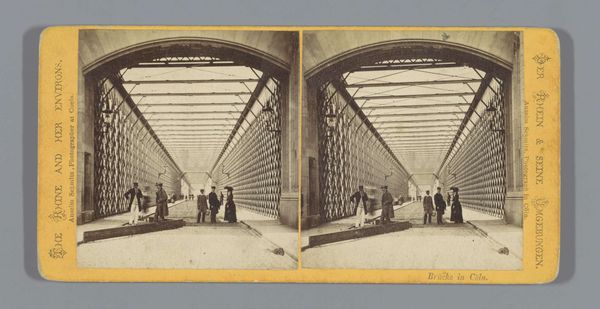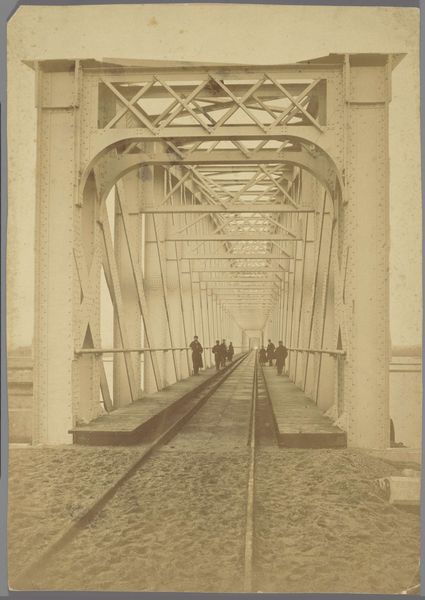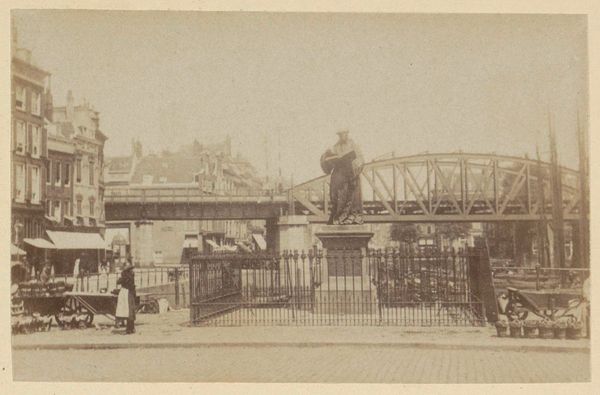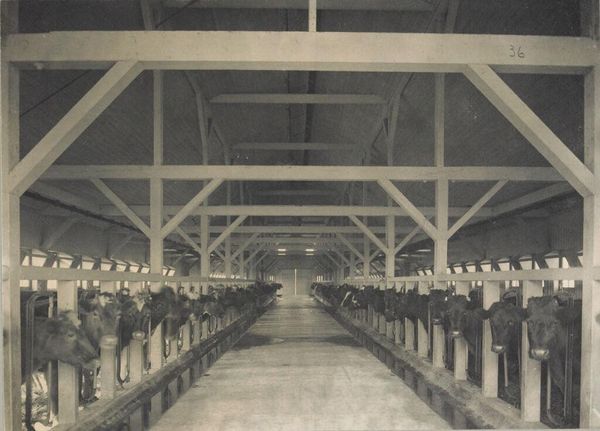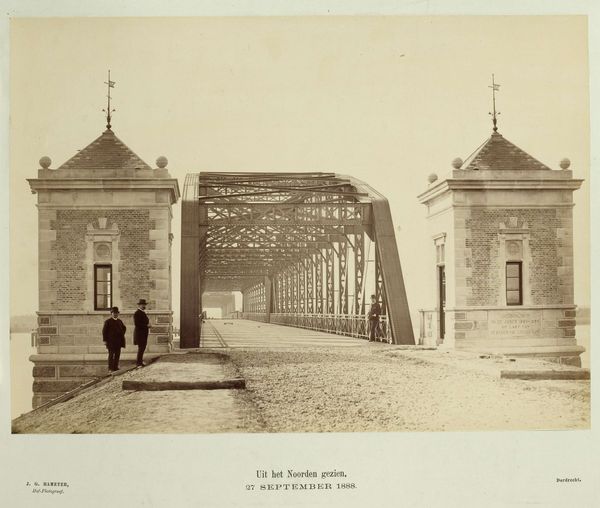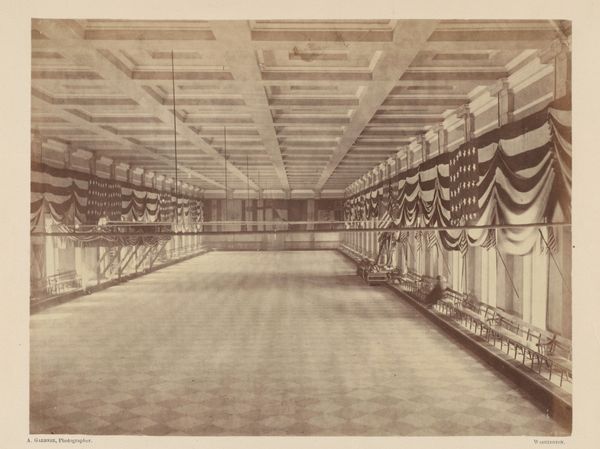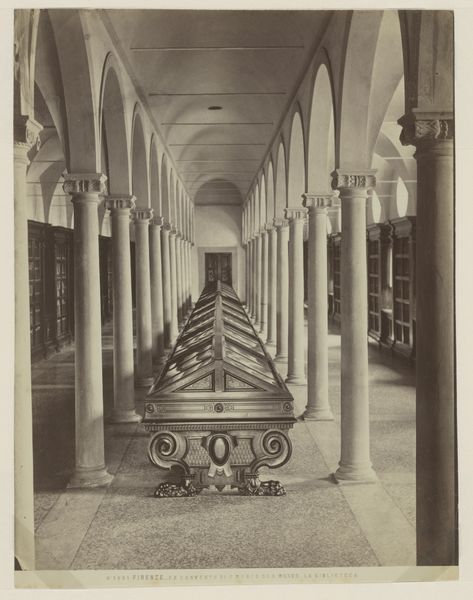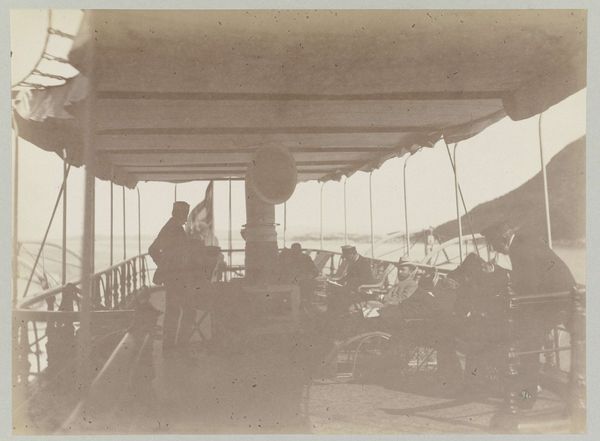
#
black and white photography
#
stone
#
sculpture
#
memorial
#
historic architecture
#
unrealistic statue
#
carved into stone
#
monochrome photography
#
men
#
historical building
#
statue
Dimensions: Image: 36.9 x 47.6 cm (14 1/2 x 18 3/4 in.)
Copyright: Public Domain
Editor: Here we have Louis Lafon’s "Lessart Viaduct on the Rance River," a black and white photograph from 1879. There's a huge group of men standing on the bridge... some are even hanging off the sides! It's a marvel of engineering, but what strikes me is this overwhelming sense of masculine presence and industrial power. How do you interpret this work? Curator: This image is deeply intertwined with the socio-political context of its time. Consider the era: the late 19th century, marked by rapid industrialization, colonial expansion, and a prevailing ideology of masculine dominance. The viaduct itself becomes a symbol of progress, a visual testament to human, particularly male, ingenuity and control over nature. Editor: So, the men aren't just workers, they are symbolic figures? Curator: Precisely. Think about how their presence emphasizes the power structures inherent in this feat of engineering. Who were these men? What roles did they play? Who was included, and perhaps more importantly, who was excluded? These are critical questions to ask when examining images like this. The photograph functions not just as a record, but also as a carefully constructed representation of societal values and power dynamics. How does the scale of the bridge relative to the individuals inform your view? Editor: That's fascinating! I was initially focused on the bridge as an object of engineering. I hadn't really considered how the people pictured are actively constructing this visual narrative, projecting ideas of labor and social hierarchies. Curator: Exactly. We need to actively deconstruct the narrative that this image presents at first glance. What does it tell us about gender roles, class structures, and the relationship between humans and the built environment? Editor: I now see how the photograph becomes a powerful statement about the industrial age, viewed through a very specific lens. It highlights how historical context shapes both the creation and interpretation of art. Curator: Indeed, and it reminds us that photographs, seemingly objective, are always mediated representations reflecting particular ideologies. There's so much packed into this one still image.
Comments
No comments
Be the first to comment and join the conversation on the ultimate creative platform.


